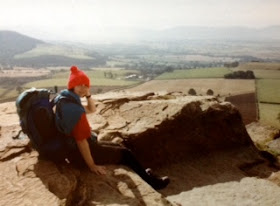 Very nearly the holy grail. Four of Ekco's round radios of the 1930s and 1940s - not the AD75 - were available for special order in a variety of colours, the cabinet made of urea formaldehyde instead of the Bakelite used for the standard 'walnut' and black cases. As far as is known, there are three genuine colour A22s - two red and one 'onyx' green - and four genuine colour AD65s - three onyx green, and one ivory. All others are reproductions or fakes - Gerry Wells' wooden Wells Coated AD65s amongst the former, and a number of injection moulded A22s passed-off as genuine amongst the latter.
Very nearly the holy grail. Four of Ekco's round radios of the 1930s and 1940s - not the AD75 - were available for special order in a variety of colours, the cabinet made of urea formaldehyde instead of the Bakelite used for the standard 'walnut' and black cases. As far as is known, there are three genuine colour A22s - two red and one 'onyx' green - and four genuine colour AD65s - three onyx green, and one ivory. All others are reproductions or fakes - Gerry Wells' wooden Wells Coated AD65s amongst the former, and a number of injection moulded A22s passed-off as genuine amongst the latter.The very best reproductions are those made by Graham Rowe, in Brisbane, Australia. Using moulds taken from genuine sets, the cabinets are made from a thermoset polymer, a compound of stone, plaster, resin and acrylic. The fakes can be melted, whilst Rowe's cabinets are irreversibly hardened, under heat and pressure. To date, he has made five AD65s - two onyx green, one swirled red, and two ivory - and four A22s - two red and two onyx green.
The pictured set is one of Rowe's two onyx green AD65s. It has an original Ekco chassis, and an original Ekco station dial, replacing the reproduction one with which the cabinet was initially fitted. Naturally, the speaker cloth is modern, but a very close match to the original. The bars are made from polished aluminium. The back is from an original AD65, and replaces the original with which the cabinet was initially fitted, being in better condition.

The moulding is absolutely correct, down to the ribbing inside, and the swirled colour is spot on. Even the captive screw retainers are correct - made of brass, moulded into the cabinet, and of the correct thread to accept the 2BA (British Association) cheese head screws used to affix the back. Were it not for the absence of the stress cracks in the cabinet which characterise all genuine colour round Ekcos, it would be impossible to tell this set from the real thing.










